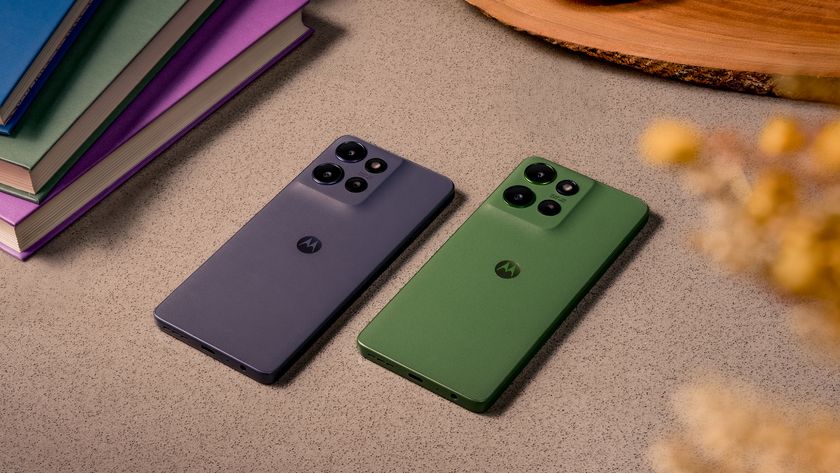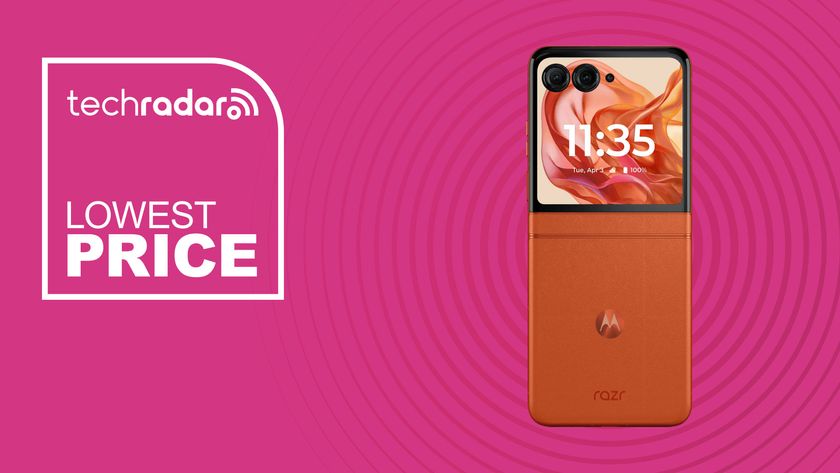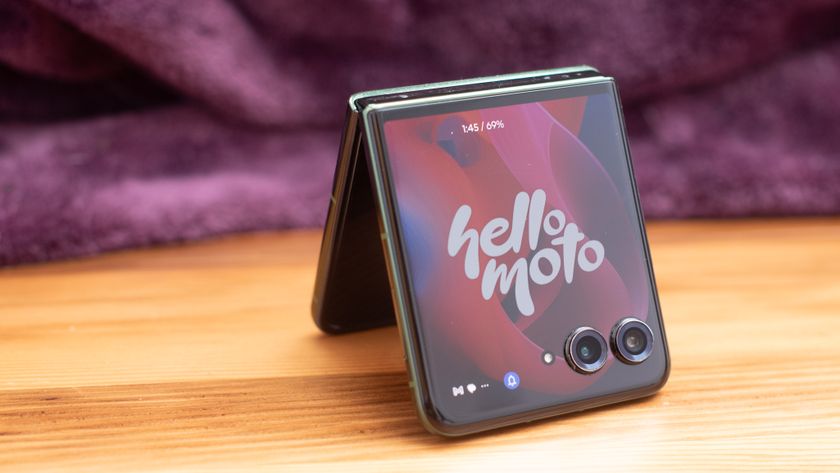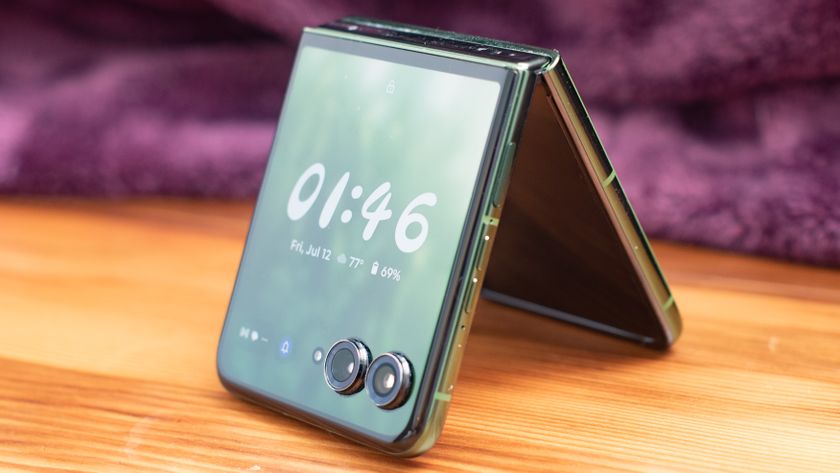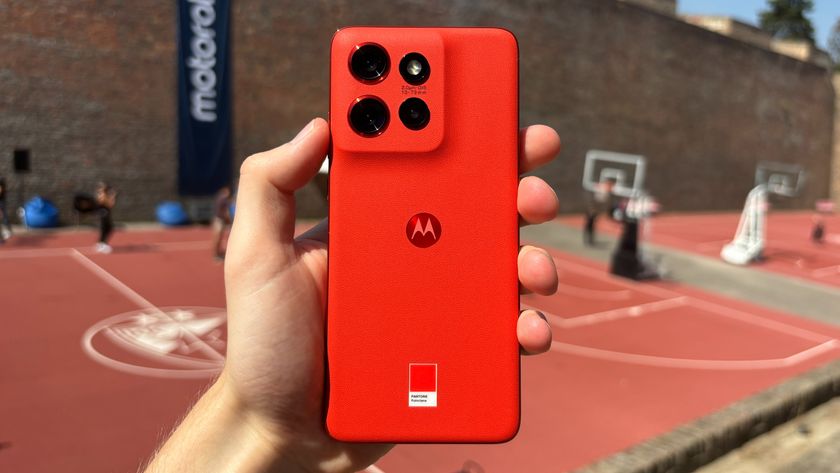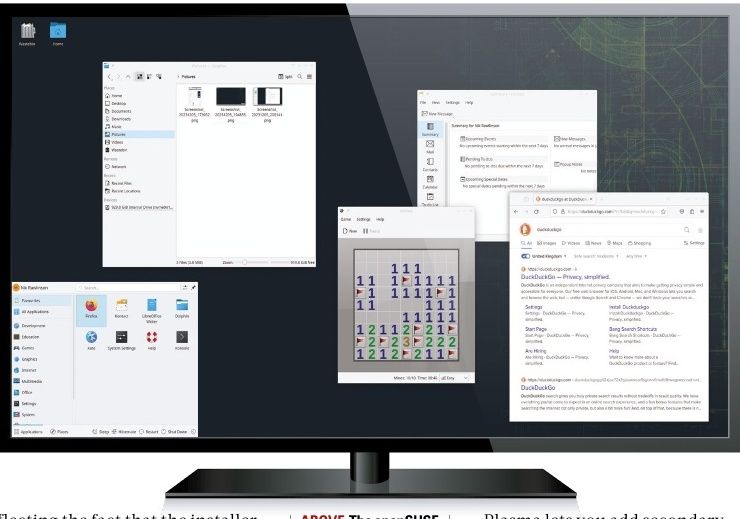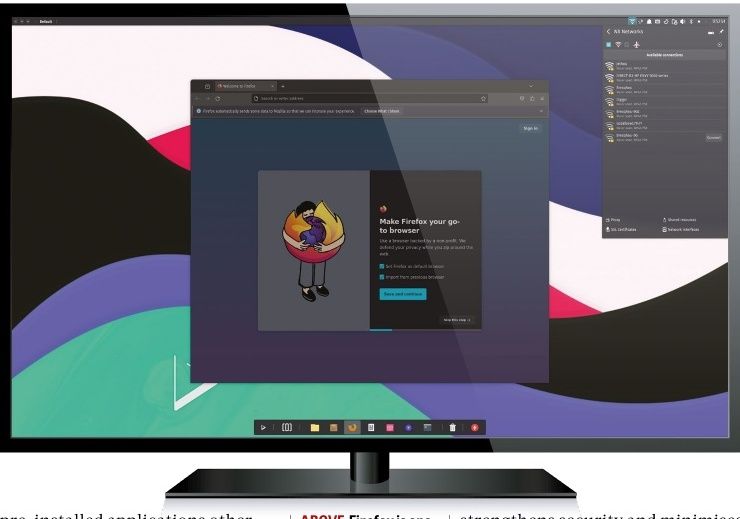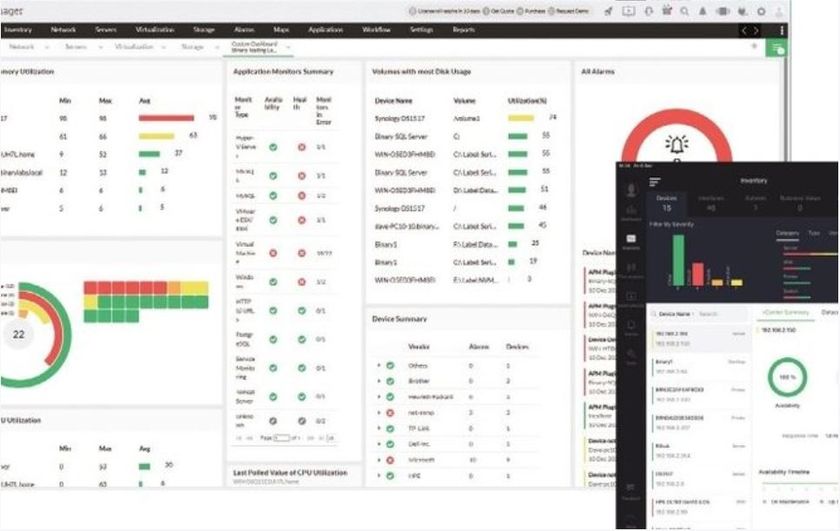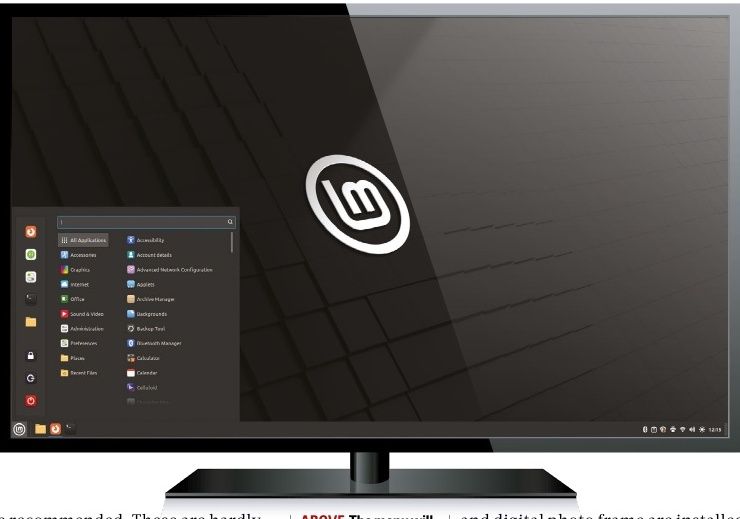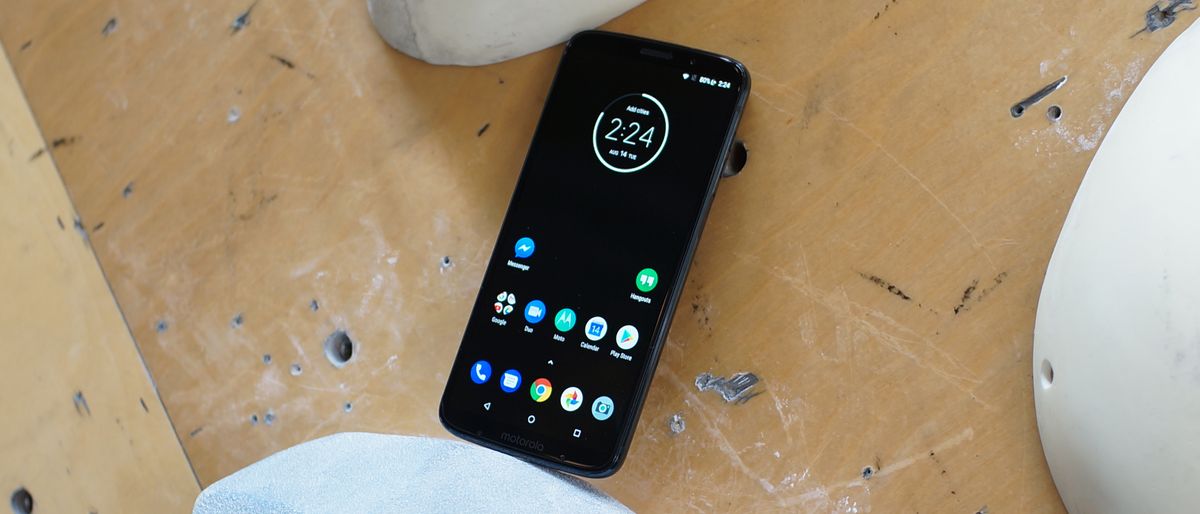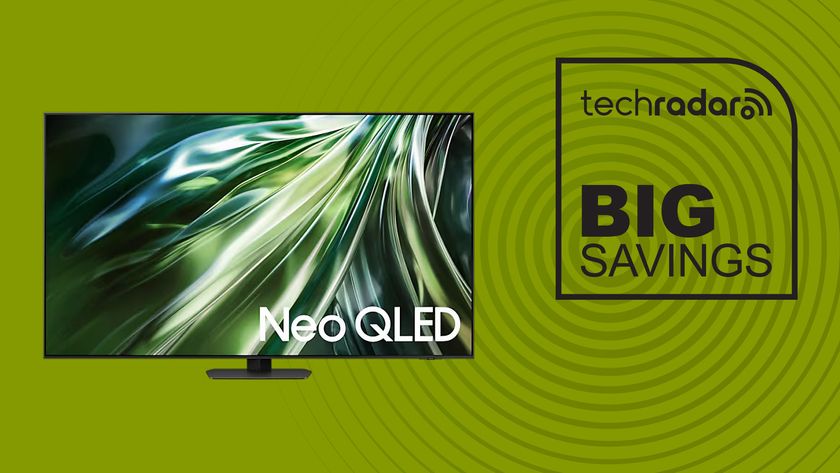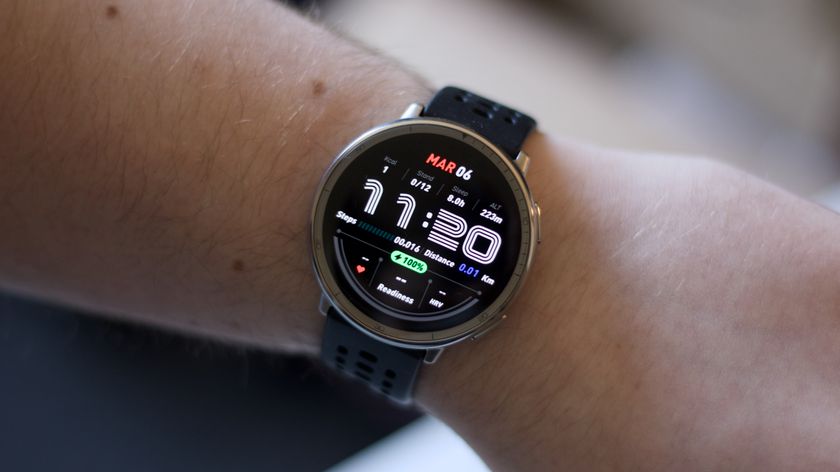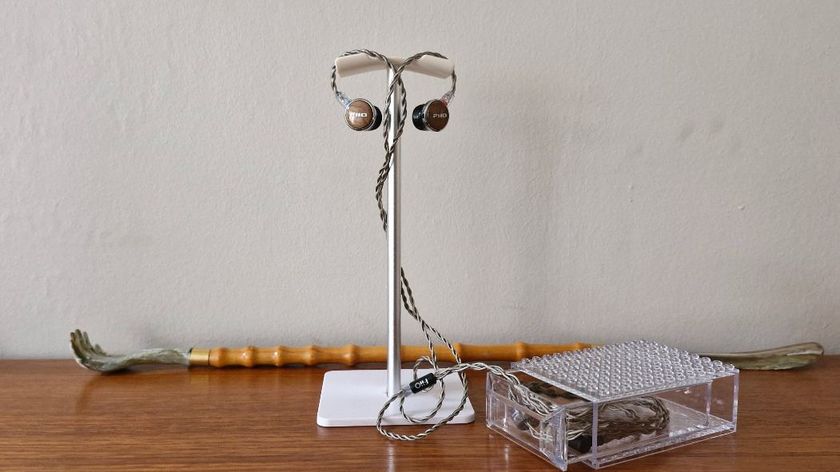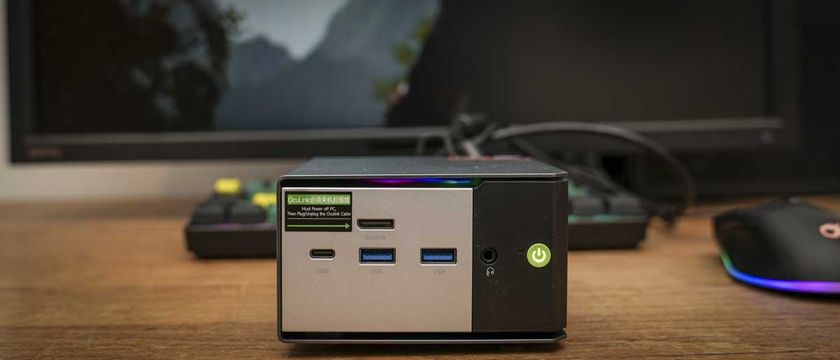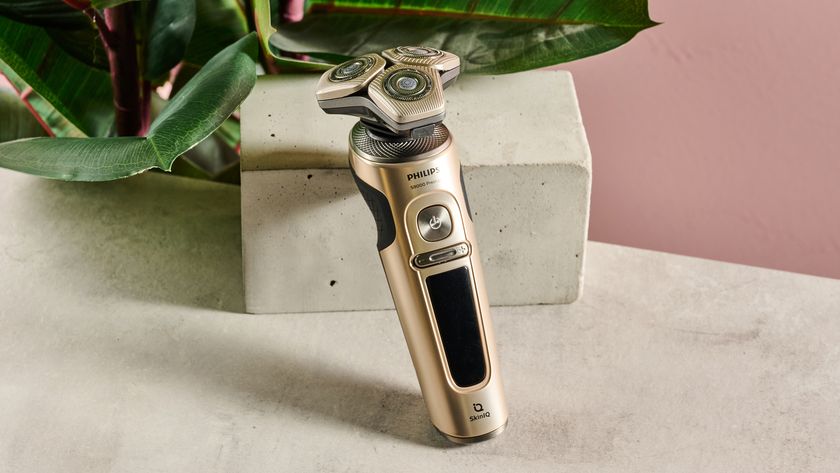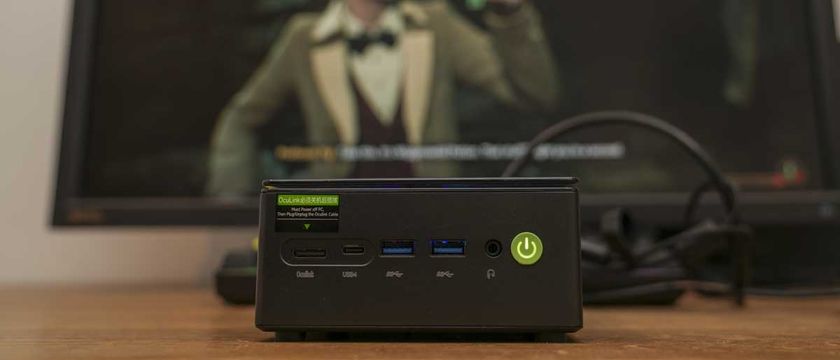TechRadar Verdict
The Moto Z3 Play offers solid mid-range performance, a big screen, plenty of customizability thanks to its compatibility with Moto Mods. It’s on sale at a fair price, but it can’t compete with its slightly better, oddly cheaper sibling, the Moto Z3 if you’re on Verizon.
Pros
- +
Unrivaled modularity
- +
Good specs at good price
- +
Very fast charging
Cons
- -
Uninspired camera
- -
Moto Z3 is superior
- -
Design letdowns
Why you can trust TechRadar
The Moto Z3 Play is a mid-range smartphone with the special trick that’s been inherited all down the Moto Z family line: Moto Mods that can transform the phone into a pico projector, 10x zoom camera, loud speaker and so on.
It offers plenty in the way of mid-range performance, an expansive 6-inch display without a notch, and as nice a design as we’ve seen from Motorola in recent years. With Moto Mods, it even gains functionality the likes of which just isn’t seen on other smartphones.
While it stands on its own as a good budget pick for smartphone shoppers, it faces competition from the significantly more powerful OnePlus 6. And, just how well Moto Mods can set it apart from the competition will depend entirely on the shopper’s interest in that customization.
Worse still, Motorola has launched the Verizon-exclusive Moto Z3 that only improves on the Z3 Play and somehow does so at a lower price. The result is a very confusing situation for the Z3 Play, which has wider carrier availability but little reason to pick it otherwise.
Release date and price
The Moto Z3 Play is available now in the US, but not in the UK or Australia. Motorola sells it unlocked, so you can take your pick of carriers thanks to support for all four major networks. The price is $499 for the Moto Z3 Play, and Motorola offers its own financing plan which can bring that to $21 per month.
When purchasing from Motorola, the price also includes the Moto Power Pack battery mod, which is worth $49 on its own. That mod is valuable for almost any user though, as it adds 2,220mAh of battery life to the phone without any cables to get tangled up in.
Currently, Motorola is only offering one flavor of the Moto Z3 Play: a Deep Indigo model with 64GB of storage and 4GB of RAM. But, for the price, nothing about the Moto Z3 Play feels like it’s been skimped on, as it fits solidly in the mid-range category.
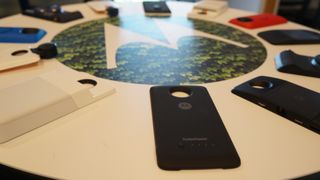
Moto Mods and 5G potential
We could talk for hours about how many other mid-range phones are out there that are offering better looks, more impressive performance, and improved cameras at an equal price to the Moto Z3 Play. We could also look at the all the flagship phones from last year that are easy to score a deal on 12 months later and can still smash the Moto Z3 Play in many ways.
But doing that would miss the point of the Moto Z line. Motorola is still putting effort into making good looking phones that try to keep up with some of the big industry trends: bezel-reduced displays, dual-sensor cameras, multiple biometric unlocking methods. What promptly sets Motorola apart, though, are Moto Mods.
No other manufacturers are offering the wild versatility that Moto Mods give Moto Z phones. The Moto Z3 Play may just be a normal phone on a normal day, but with a Moto Mod added on, it can turn into a projector, a capable portable gaming handheld, an instant camera, a Hasselblad zoom camera, a health checkup device, or even an Amazon Alexa speaker.
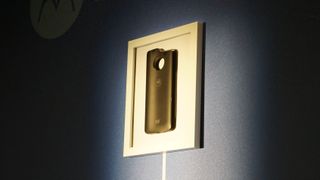
With that kind of functionality, Motorola’s Moto Z lineup really sets itself apart from the competition. One potential game changer coming next year for the standard Moto Z3 is a 5G mod set to make the Moto Z3 the first phone upgradeable to support a 5G network.
Motorola hasn’t confirmed many details about the 5G mod, and right now it seems to only be guaranteed to work for the Moto Z3 on Verizon’s upcoming 5G network. But, the possibility of the 5G mod working with the Moto Z3 Play could improve the phone’s potential in the future.


Design and display
Motorola’s Moto Z family design doesn’t change terribly much year over year, because each new phone needs to be able to fit Moto Mods onto the back. As such, the Moto Z3 Play doesn’t look too different from earlier Moto Z phones.
It has a 76.5 x 156.5 x 6.75mm body with an aluminum frame, a glass back, and a Gorilla Glass 3 screen. It weighs 156g, which gives it a nice heft that doesn’t feel overly heavy. The screen lock button is lonesome on the left side, while the volume buttons on the right side sit above a side-mounted fingerprint scanner.
The fingerprint scanner location is easy to hit, making unlocks quick. But, it’s also easy to accidentally hit, as we often found our thumb unlocking the phone when we slid it into our pocket.
The reason for the relocation of the fingerprint scanner was to make room for the Moto Z3 Play’s extensive 6-inch display, which leaves thin bezels on either side and svelte strips for the mics at the bottom and the speaker and selfie camera at the top. Around back, the Moto Z3 Play has the typical, large camera bump up top and the Moto Mods connector near the bottom of the phone.


On the bottom edge of the Moto Z3 Play, there’s just a USB-C 3.1 jack. No headphone jack. No speaker grille. The earpiece above the screen plays double duty as a loudspeaker, and though the audio is clean at max volume, that max volume isn’t very loud.
Most of the design looks and feels great. Especially when the 6-inch Super AMOLED display comes on. The deep blacks offered by AMOLED are always something we can appreciate, especially when a phone has black bezels, which will often appear to blend seamlessly with the screen’s black portion. The resolution is Full HD+, or 2,160 x 1,080, and while that isn’t as sharp as the Galaxy S9 or even Galaxy S8, you probably won’t notice the difference and it’s still plenty crisp.
There’s even a super subtle bit of quality design that most people will only experience once: the SIM tray. While many other SIM trays let the card just sit loose, making insertion a tricky balancing act, the Moto Z3 Play SIM tray actually squeezes the SIM card lightly to hold it securely in place.
There are some downsides to the design, though. Despite only having one major port, Motorola still hasn’t gone for better water resistance, offering only simple splash resistance instead of the IP68 rating many other phones are getting. And, with so much glass, we’d normally want to get a Moto Z3 Play case on our phone, but because of the need to have access to the Moto Mods connector, protecting the back and front of the phone at the same time is a bit of a puzzle.
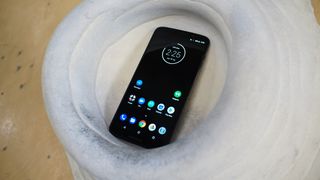
Performance and OS
The Moto Z3 Play is powered by a mid-range Snapdragon 636 octa-core chipset with 4GB of RAM and 64GB of storage. The storage is thankfully expandable up to 2TB with a microSD card. All that hardware runs Android 8.1 Oreo on the software side.
Motorola has a good reputation for keeping its customization of Android to a minimum, so the experience on the Moto Z3 Play is simple. Beyond stock Google apps, only four Motorola apps came pre-installed on the model we tested.
One handy addition Motorola adds to many of its premium phones are Moto Actions, which let you make the phone take a screenshot, turn on the flashlight, open the camera app, mute the ringer, and more with simple gestures, taps, and swipes.
Motorola also adds in its own Moto Voice service (currently in Beta), which we tried out but didn’t find to be any more useful than Google Assistant, which is also readily available on the Moto Z3 Play. It could control a few more settings in the phone, like Do Not Disturb, or erase app cache data and manage Moto Mods.
It may come in handy, but we don’t see it as a full substitute for Google Assistant, especially with the worse sounding voice and “Hello Moto” being just as awkward to say as “OK, Google.” We were at least able to change the addressing method to “Yo, Moto,” but Moto Voice seemed pretty picky about dropping “Moto” out of the equation entirely
The combination of hardware and software feels perfectly adequate in everything we tested. Playing the Hitman Sniper game on high settings showed minor stutter on occasion, but was otherwise smooth and playable.
The Moto Z3 Play earned a 1,329 single-core score and 4,949 multi-core score in Geekbench 4, which isn’t bad, but does leave it trailing behind last year’s Snapdragon 835-wielding flagship phones. Still, for web browsing, gaming, and video streaming, we really don’t notice any shortcomings.
A few things about the user interface on the Moto Z3 Play do annoy us. For one, the Adaptive Brightness settings which we’d expect to be right next to the top menu brightness controls is actually buried all the way in the display settings, making it tedious to toggle on and off.
Another thing that is minor but really undercuts the polish of the Moto Z3 Play is a faint glow at the top of the screen, almost like the backlight bleed we see on some LCD displays. Since the Moto Z3 Play uses an AMOLED display, it benefits from lower power consumption when using mostly black backgrounds, and the glow at the top of the display hurts that benefit while also maring the smooth blend between black pixels and black bezels. In daylight, it’s hard to notice, but in the dark, it’s plain to see.
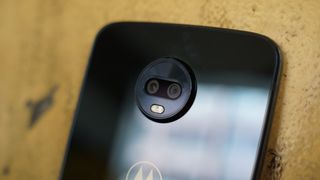
Camera and battery
The Moto Z3 Play camera isn’t a strong selling point for the phone. Though it’s a dual-sensor system, the secondary camera is just 5MP and dedicated to sensing depth. The primary lens is 12MP, and shoots OK but not amazing photos, with noise often being readily apparent.
The images we capture look good on the phone’s screen, but don’t hold up so well on a laptop-sized display or when zoomed in very far. It doesn’t do a great job capturing fine detail even in fairly well-lit settings. We did manage to capture one surprisingly crisp photo of a flying Great Black Wasp, but it was incredibly sunny and the wasp was hauntingly large.




Colors removed with a filter




Cropped in
Motorola offers some special features for the camera, but none are too useful. The cutout feature removes all of the background, but it doesn’t look better than a half-baked effort in Photoshop. The depth effect in portrait mode doesn’t compare to actual bokeh. Maybe the only one we found interesting was the ability to remove all colors except one in photos and videos, but even that proves hard to accurately control.
At 8MP, the selfie camera at least does a good job. It’s sharp enough for close-up shots, as we could clearly see each hair in our beard that still needs to be shaved. While Motorola offers a face filter tool, it dramatically reduced the image quality without really offering much.

Video captured in 4K on the rear camera looks nice and crisp, but without any stabilization, the footage can easily get shaky.
The Moto Z3 Play battery is a positive, though. At 3,000mAh, it’s fairly standard. We put it through a 90-minute Full HD video playback test with the display at max brightness, and it dropped from 100% to 85%.
But, what really packs a punch is the Turbopower charging, which took the phone from 0% to 31% in 15 minutes, to 56% in 30 minutes, and to 100% in 85 minutes. Motorola boasts “half a day’s power in half an hour,” and it lives up to that promise.
The battery story just gets better when you factor in the included Moto Power Pack, which can almost double the battery life of the phone while attached. We did notice the phone running a bit warm when we used the battery mod, but not alarmingly so.
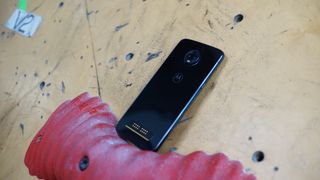
Verdict
The Moto Z3 Play may not be the cheapest or best mid-range phone out there. If carrier freedom isn’t a concern, we’d still likely recommend the killer-on-a-budget Asus ZenFone V. But, the Moto Z3 Play brings plenty of performance, an up-to-date Android OS, and the Z family’s signature modularity all at a fair price.
The only real problem with the Moto Z3 Play is that the Moto Z3 packs a better camera and more powerful internals while getting a price tag that’s almost $20 lower.
So, while we can recommend the Moto Z3 Play for anyone that wants a good price on a good phone with awesome modularity, the only way we can recommend it over the Moto Z3 is if you want nothing to do with Verizon.
Over the last several years, Mark has been tasked as a writer, an editor, and a manager, interacting with published content from all angles. He is intimately familiar with the editorial process from the inception of an article idea, through the iterative process, past publishing, and down the road into performance analysis.
